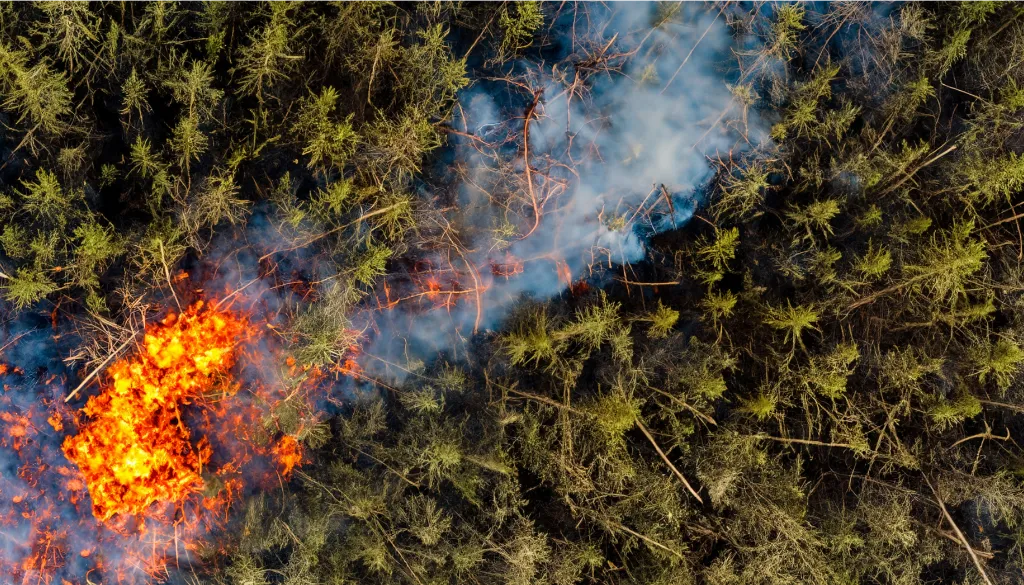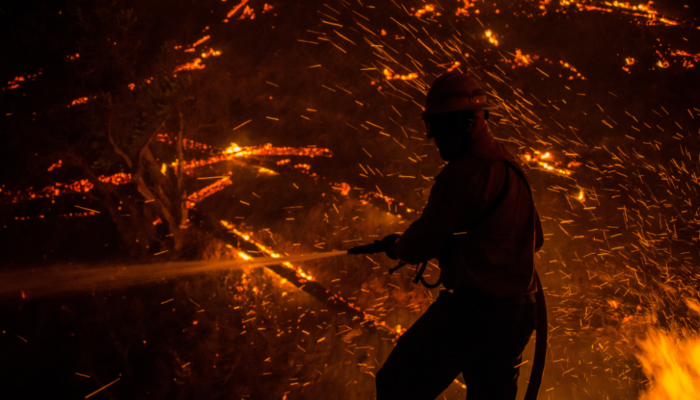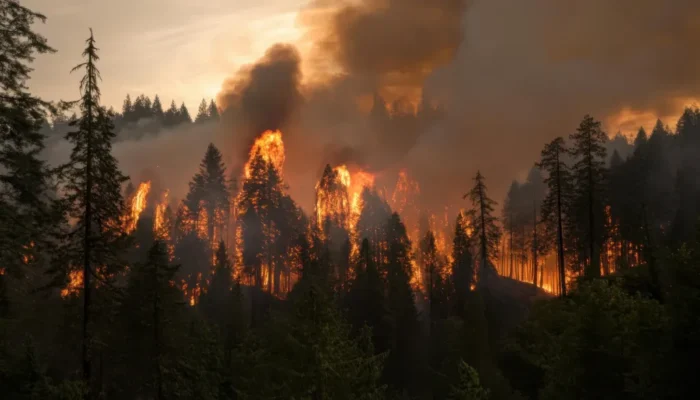When we look at the destructive power of wildfires that rage across landscapes each year, understanding wildfire fuel becomes essential to comprehending why some fires behave differently. Wildfire fuel, which consists of all the vegetation and organic material that can burn during a fire event, plays a critical role in determining how quickly fires spread, how intensely they burn, and how difficult they are to control. Different types of vegetation create vastly different wildfire fuel conditions, from fast-burning grasses that send flames racing across meadows to dense forest undergrowth that can smolder for days after the main fire front has passed. Scientists, firefighters, and land managers have learned that by studying how various vegetation types function as wildfire fuel, we can better predict fire behavior, improve prevention strategies, and develop more effective firefighting techniques that might save lives and property in fire-prone regions worldwide.
Table of Contents
ToggleThe Science of Wildfire Fuel
Wildfire fuel isn’t just plants that catch fire—it includes both living and dead vegetation, each affecting how fires spread. The moisture level, composition, and arrangement of these materials play a huge role in fire behavior. Scientists classify wildfire fuel based on how quickly it reacts to environmental changes.
One-hour fuels—fine materials like grass, leaves, and small twigs—dry out or absorb moisture within an hour.
Ten-hour fuels—sticks and branches—take longer to adjust.
Hundred-hour fuels—larger branches and small logs—change moisture over days.
Thousand-hour fuels—big logs and stumps—take weeks to dry or absorb moisture. This explains why fires can keep smoldering in thick fuels long after visible flames disappear.
The way fuel is spread across the land—called fuel continuity—affects how easily fires move. Horizontal continuity refers to how evenly fuels cover the ground, while vertical continuity involves “ladder fuels” that let flames climb from the ground into tree canopies. This can turn a manageable fire into a dangerous crown fire, racing through treetops and becoming extremely hard to control.
The density and compactness of fuels also matter—looser fuels burn faster due to better oxygen flow, while tightly packed fuels burn slower but with intense heat.
Grassland Fuel Types
Grasslands are some of the most fire-prone environments on Earth. In just a few days of hot, dry weather, they can turn from lush green fields into wildfire hazards. The thin structure of grass blades allows oxygen to reach deep, fueling intense fires. As grasses dry out at the end of their growing season, their moisture levels drop—sometimes below 10%—making them highly flammable. A small spark or ember can easily ignite these dry grasses.
Because grass is evenly spread across the land, fires move quickly, often faster than a person can run. Strong winds can push flames even faster, sometimes exceeding 15 miles per hour in extreme conditions.
How Seasons Affect Grassland Fires
Fire risk changes throughout the year. In spring and early summer, grasslands are full of moisture, so fires struggle to spread. But as summer turns into fall, grasses dry out and become ideal wildfire fuel. This seasonal cycle makes grassland fire seasons fairly predictable. However, climate change is disrupting these patterns, extending dry periods and creating new fire risks.
Historic grassfires, like those that periodically burn across the Great Plains, show how dangerous these fuels can be. Even though grass fires tend to be short-lived, they can be intense and catch communities off guard.
Shrubland and Chaparral Fuel Types
Shrubland ecosystems, especially chaparral in Mediterranean climates like California, burn differently than grasslands. Many shrubs contain flammable oils and resins, making them highly combustible. Their dense, woody structure allows fires to burn longer and more intensely. Since shrubs often grow in continuous, interwoven stands—both across the ground and upward—they create ideal ladder fuels that help fires spread from ground level into tree canopies. Older shrubs accumulate large amounts of dead plant material, sometimes making up half of their total biomass, which increases wildfire fuel even further.
Fire as Part of the Shrubland Lifecycle
Many shrubland plants have adapted to fire over time. Some store energy in underground structures called burls, which help them regrow after burning. Others have seeds with fire-resistant coatings that only germinate when exposed to heat or smoke. These adaptations make shrubland ecosystems difficult to manage because they are naturally built to burn periodically.
Different types of shrublands across the world—like California’s chaparral, South Africa’s fynbos, and Australia’s kwongan—present unique wildfire challenges. Climate patterns, vegetation, and historical fire cycles have shaped these landscapes for thousands of years, requiring specialized fire management strategies.
Forest Fuel Types
Forests have the most varied wildfire fuel conditions, with different types of trees and plants affecting fire behavior. Coniferous forests (pine, spruce, fir) have flammable resins and needle structures that ignite easily and spread fire quickly. Deciduous forests (oak, maple) pose lower fire risks because their leaves hold more moisture and burn less easily.
The forest floor is layered with wildfire fuels. Freshly fallen needles and leaves make up the litter layer, while partially decomposed organic matter forms the duff layer—each burns differently and requires unique firefighting approaches. Fires also spread through understory vegetation, fallen branches, and standing dead trees (snags) that create pathways for flames to climb into the canopy.
Forest Management and Fire Risk
Past fire suppression policies unintentionally caused fuel build-ups, making modern forest fires more intense. Historically, frequent low-intensity fires helped keep fuel levels in check, but decades of suppression—especially in the western U.S.—have led to dangerous fire conditions.
Today, forest management focuses on fuel reduction, using methods like:
Thinning operations to remove excess trees and vegetation
Prescribed burns to safely eliminate surface fuels
Mechanical treatments to disrupt fuel continuity
However, these efforts often fall short compared to the scale of the fire risk in many altered forests.
Complex Wildfire Fuel Environments
Some of the most unpredictable wildfire scenarios happen in areas where different vegetation types mix, forming transition zones. These zones may include grasses growing beneath trees or shrubs blending into forest edges, allowing fire to shift behavior as it moves through different fuels.
The wildland-urban interface is especially challenging. Here, natural vegetation meets human development, adding flammable materials like houses and ornamental plants to the mix. Fires in these areas don’t follow simple patterns, requiring specialized strategies for modeling and suppression.
How Vegetation Mosaics Affect Fire Spread
Across landscapes, mixed vegetation influences wildfire behavior. In some cases, natural firebreaks—areas with less flammable plants—slow fire progression. However, fires can also become more extreme when they reach highly combustible vegetation or spread through spotting, where burning embers travel ahead of the main fire and start new blazes.
Climate Change and Fire Risks
Climate change is shifting vegetation patterns, altering wildfire fuel dynamics in unpredictable ways. As plant communities respond to changing temperature and rainfall, new fuel arrangements emerge—sometimes creating conditions that fire managers have never faced before.
Conclusion
Understanding how different vegetation types function as wildfire fuel provides essential insights for everyone from fire scientists developing predictive models to homeowners making decisions about landscaping in fire-prone areas. The interactions between vegetation characteristics, climate conditions, and fire behavior create complex systems that continue to challenge our best efforts at prediction and management, particularly as climate change introduces new variables into these already complicated relationships. Research into wildfire fuel characteristics continues to advance our knowledge, with emerging technologies like remote sensing, artificial intelligence, and advanced computational modeling offering new tools for mapping and analyzing fuel conditions across large landscapes. As communities around the world face increasing wildfire threats, this growing body of knowledge about wildfire fuel provides a critical foundation for developing more effective prevention, preparedness, and response strategies that can help reduce the devastating impacts of wildfire events on both natural ecosystems and human communities living within them.




